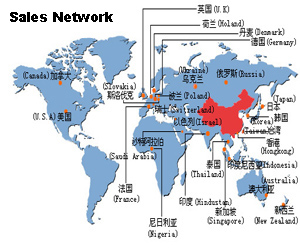Articles in the News Category
News »
A yeast infection test is the best way to confirm whether or not you have this disease. In fact, there are many types of these you can take but the first step is to first see a doctor.
Once you are in the clinic, the doctor will ask you some questions. These include what symptoms are you feeling, for how long have you experienced it and what medications are you currently taking. You have to be honest about everything especially if this has happened before. If this is the first time, …
News »
Ever since obesity has been termed as an epidemic, it has attracted attention throughout the world. In America weight loss has become an industry. The air is thick with discussions and counter-discussions about various diet plans being proposed by various people.
There is a 5-Factor Diet, Atkins Diet, Bob Greene’s Best Life Diet, South Beach Diet, Cabbage Soup Diet, Carbohydrate Addict’s Diet, Anne Collin’s diet and now you have DASH diet and Fat Smash Diet and Size Zero Diet and …. it goes on!
Proponents of each of these diet plans make …
News »
Bandar Seri Begawan – The latest announcement of the drop in food and beverage prices on the Consumer Price Index (CPI) has evoked a response by consumers in the country, who viewed the announcement as unreasonable as prices were still high.
Retail consumers, including restaurant owners, food manufacturers and the general public, called for further review by the Department of Economic Planning and Development (JPKE) that should include more consumer items.
The review should also include the price of goods against core wholesale prices to ensure transparency.
“Price fluctuation by a few cents …
News »
(NaturalNews) The American Botanical Council (ABC) has called for the FDA to lift its ban on the importation of stevia for use as a sweetener, in an article by ABC founder and executive director Mark Blumenthal, printed in the organization’s publication HerbalGram.
“The FDA’s import alert is an outdated policy, based on the market and regulatory conditions in the late 1980s,” Blumenthal writes. “If FDA were to rescind its stevia import alert, importers of stevia would still have the burden of confirming safety for use.”
Stevia is a natural sweetener derived from …
News »
BEIJING, March 27 (Xinhua) — “I am wondering what’s in this flour. Are there additives, and are they toxic or safe?” asked housewife Wang Jinghua as she shopped in an outlet of Walmart in southwest Beijing.
Wang told a Xinhua reporter she was worried about benzoyl peroxide, an additive widely used in flour, biscuits and other food. “A friend told me even a slight amount of this chemical is harmful, but I’m not sure what to do,” Wang said.
Her confusion is understandable. No single agency or ministry in China …
News »
March 27 – The Codex Committee on Food Additives last week agreed to adopt nine colours for use in food supplements at levels consistent with recommendations by the International Alliance of Dietary/Food Supplement Associations (IADSA).
At its meeting on March 17 in Beijing, the Committee agreed to put Allura Red AC (300 mg/kg), Caramel Colour, Class IV (20,000 mg/kg), Carotenoids (300 mg/kg), Chlorophylls, Copper Complexes (500 mg/kg), Erythrosine (300 mg/kg), Fast Green FCF (600 mg/kg), Grape Skin Extracts (500 mg/kg), Indigotine (300 mg/kg) and Iron Oxides (7,500 mg/kg) forward for the …
News »

A discovery that two commonly used food additives are estrogenic has led scientists to suspect that many ingredients added to the food supply may be capable of altering hormones.
More than 3,000 preservatives, flavorings, colors and other ingredients are added to food in the United States, and none of them are required to undergo testing for estrogenic activity, according to the Food and Drug Administration.
“We need to be mindful of these food additives because they could be adding to the total effect of other estrogen mimicking compounds we’re coming into contact …
News »
ELIZABETH JACKSON: Consumer and environment groups are concerned the burgeoning field of nanotechnology will soon be embraced by food companies and they want Australia’s Food Standards Code to keep pace.
The technology promises to make food look and taste better but little is known about its health impact. Some food giants are reported to be researching the technology, though none have publically acknowledged it.
Europe is poised for a moratorium on the technology’s use in food, while Australia thinks its current regulatory standards are sufficient.
From Melbourne Rachael Brown reports.
RACHAEL BROWN: Take a …
News »
Take a strand of your hair, divide its width by 100,000 and that’s the size of a nanoparticle, a tiny particle with the potential to create a big stir in the food world.
The technology promises to make food look and taste better but little is known about its health impact.
Some food giants are reported to be researching the technology, though none have publicly acknowledged it.
Europe is poised for a moratorium on the technology’s use in food, while Australia thinks its current regulatory standards are sufficient.
Consumer magazine Choice says nanotechnology is …
News »
“Superfood” is a term coined to define foods rich in phytonutrients. Phytonutrients are certain organic components of plants, thought to promote human health. Fruits, vegetables, grains, legumes, nuts and teas are rich sources of phytonutrients.
Common phytonutrients include carotenoids, coumarins, flavonoids, indoles, lignans, isoflavones (including genistein and daidzen) organosulfurs and phytosterols.
Phytonutrients are usually related to the color of fruits and vegetables — green, yellow-orange, red, blue-purple, and white. Because of this natural color coding of nutrients, dieticians recommend the rainbow diet—eating fruits and vegetables of varied color each day.
Evidence that eating …


